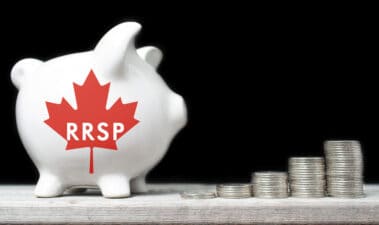It’s always interesting to see how much savings individuals and households have when they are close to retirement. This information can tell us whether the savings are enough for retirees to lead comfortable lives.
The average retirement age in Canada is 65, and according to a Ratehub report, the average 65-year-old has around $129,000 in their RRSP (Registered Retirement Savings Plan). The figure rises to $160,000 if you include the TFSA (Tax-Free Savings Account), while total savings are close to $319,000.
It’s mandatory to start withdrawing your balance from the RRSP by the age of 71. While there is no data for the average RRSP balance for this age cohort, a report from Statistics Canada estimates the average retirement savings for those over the age of 65 is $272,000.
As most Canadians are retired by the age of 65, they would likely start withdrawing their savings from registered accounts such as the RRSP and the TFSA, which means the retirement savings for 71-year-old Canadians would be lower than $272,000.
Is $272,000 enough for Canadians to retire?
In 2024, several Guaranteed Investment Certificates (GICs) offer Canadians a generous yield of 5% due to interest rate hikes. GICs are similar to fixed deposits, where you deposit a certain sum of money with a bank or financial institution and earn interest on these loans. Given an annual interest rate of 5%, an investment of $272,000 in GICs would help you earn $13,600 in annual interest.
Now, the average monthly CPP (Canada Pension Plan) payout in 2024 is close to $831.92, indicating an annual payment of $9,983. This suggests that Canadians can earn around $23,500 every year just by holding their retirement funds in GICs and receiving a monthly average pension.
If you no longer have a mortgage payment, an income of $2,000 every month might be enough to cover basic expenses for most retirees. However, while GICs offer you a tasty yield right now, the Bank of Canada is likely to lower interest rates over the next 12 months, especially if inflation is brought under control. In this case, retirees can consider allocating funds to blue-chip dividend stocks and benefit from regular dividend payouts and long-term capital gains.
Brookfield Infrastructure is a top dividend stock
One quality dividend-growth stock is Brookfield Infrastructure Partners (TSX:BIP.UN), which offers you a forward yield of 5.9%. Down 34% from all-time highs, BIP stock has returned over 1,100% to shareholders since its IPO (initial public offering) in 2008, easily outpacing the TSX index and peers.
In the first quarter (Q1) of 2024, BIP reported a funds flow from operations of US$615 million or US$0.78 per share, compared to US$554 million or US$0.72 per share in the year-ago period. Comparatively, it pays shareholders a quarterly dividend of US$0.405 per share, indicating a payout ratio of just 52%.
BIP’s capital-recycling plan allowed it to secure US$1.2 billion in proceeds in Q1, and it is on track to sell legacy assets totalling US$2 billion in 2024, a majority of which will be reinvested in higher-growth projects.
Analysts covering BIP stock remain bullish and expect it to surge over 35% in the next 12 months. After adjusting for dividends, cumulative returns may be closer to 41%.








